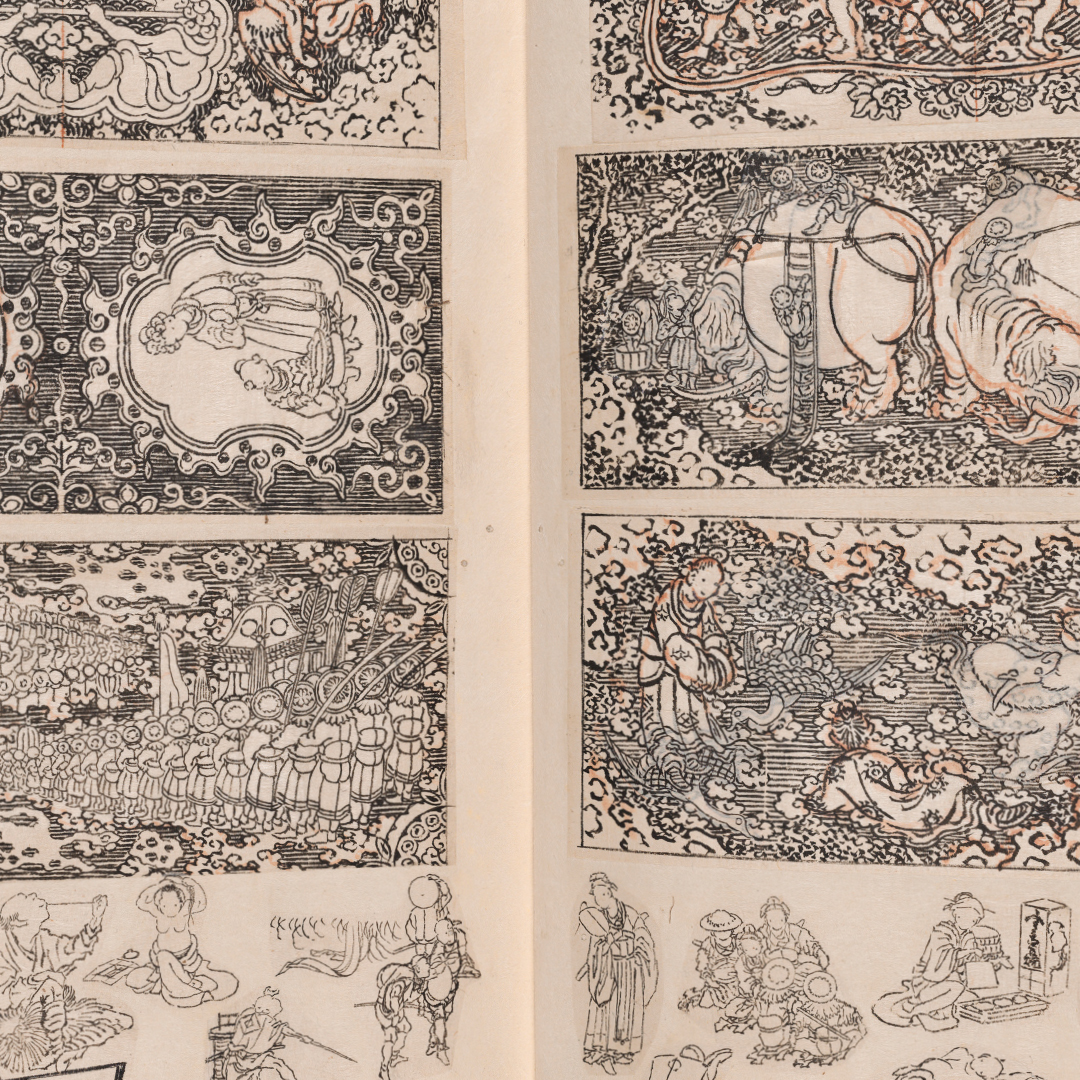Hokusai Smartphone Tour: Album of Miscellaneous Sketches Including Designs for Artisans

On the third stop on the free smartphone tour of Hokusai: Inspiration and Influence from the Collection of the Museum of Fine Arts, Boston, exhibition curator and Curator of Japanese Art at the Museum of Fine Arts, Boston, Dr. Sarah Thompson is joined by Michiko Adachi, Bettina Burr Associate Conservator at the Museum of Fine Arts, Boston, for a conversation on Katsushika Hokusai’s unintentionally collaborative Album of Miscellaneous Sketches Including Designs for Artisans.
This collection of sketches, although believed to be mostly drawn by Hokusai, was passed between many of the artist’s students and peers, with each contributing new drawings. Learn more about this album and its contents by tuning in to the audio recording above. Then, explore all seven stops on the exhibition’s free smartphone tour on our SoundCloud or by visiting the exhibition in-person at the Seattle Art Museum. Hokusai: Inspiration and Influence closes Sunday, January 21, 2024. Reserve your tickets to see it now in the heart of downtown Seattle!
Album of Miscellaneous Sketches Including Designs for Artisans, about 1830s–40s
DR. SARAH THOMPSON: The Asian Conservation Studio at the MFA are the people who clean and repair the art objects so that they appear at their very best in exhibitions, and who make sure that they are always stored and exhibited in the safest possible conditions. Michiko Adachi, who handles works on paper, will tell you more about an especially interesting object that she has treated.
MICHIKO ADACHI: This book with sketches and preparatory drawings is part of the Hokusai school drawing collection. The collection was believed to have been purchased by William S. Bigelow when he was living in Japan in the 1880s, from Hokusen, who had been a pupil of Hokusai.
These books are immensely fun to look through as each page holds something entirely different, from a more finished drawing, to design work, to even just a small sketch of a mouse. They were probably drawn or added throughout the years by multiple students and artists as drawings were often passed along. For this book, it is thought that a large percentage of the drawings were drawn by Hokusai himself.
These drawings are usually drawn on a thin, translucent paper in black ink, cut and pasted onto a thicker paper bound in a book format. Often you can see the artist making an outline in lighter gray ink before the final sketch, or red ink to place a grid or to make corrections. Artists also made corrections in their drawings by pasting another sheet of paper onto the desired area. The original drawing is usually still visible because the paper is translucent and often not completely pasted down, giving you a glimpse into the artistic process. You can see one of these corrections in the rectangular design work in the bottom right of this book. On the right-hand side, there are three animals surrounding two figures. The artist had initially drawn a circular pattern on the body of the animals, but later decided to change this by pasting a piece of paper on top and then drawing the animals again without the pattern on its body. If you look closely the circular pattern is still visible through the pasted paper.
A grant from the Toshiba International Foundation allowed for the conservation and imaging of a select group of Hokusai school drawings, such as this book, enabling us to share this small but special collection. You can flip through this book on the screen located next to the book.
– Lily Hansen, SAM Marketing Content Creator
Image: Album of Miscellaneous Sketches Including Designs for Artisans, about 1830s–40s, Artist unknown, Japanese, ink on paper, mounted in paperbound album, William Sturgis Bigelow Collection, Photograph © Museum of Fine Arts, Boston.